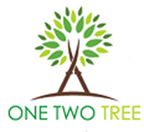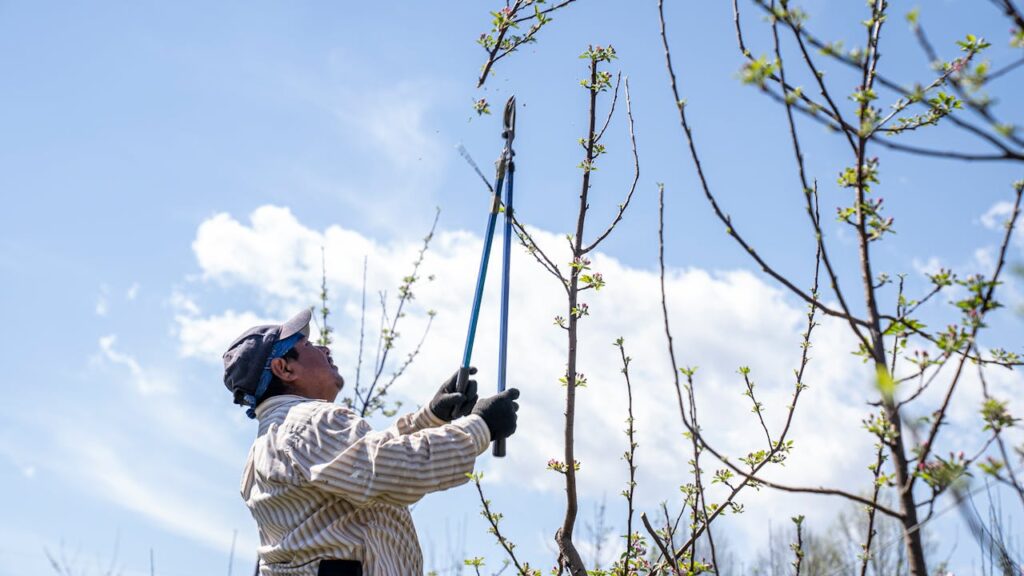Trimming trees near power lines is a task that requires careful planning and strict safety measures. It’s not just about cutting branches—it’s about protecting yourself and maintaining the safety of the surroundings. Power lines pose a significant risk when dealing with tree trimming, and understanding this danger is crucial.
Before taking on the task yourself, it’s important to recognize why trimming near power lines is so hazardous. Electrical safety needs to be your top priority as contact with live wires can result in severe injury or even death. While it’s tempting to take on the job to keep your landscape tidy, one small mistake can lead to serious consequences.
Therefore, before you grab your tools and start trimming, it is essential to know the necessary precautions and proper techniques. This way, you can ensure the job is done safely. Understanding these basics will help you decide if you should tackle the job yourself or bring in a professional. Let’s explore the crucial steps involved in safely trimming trees near power lines.
Recognizing the Dangers of Trees Near Power Lines
Trees growing too close to power lines present serious risks both during trimming and due to natural causes like wind or ice. The electric lines are not insulated, meaning they can deliver a deadly shock or cause a fire if touched by branches. Even if a branch appears dry or dead, it might still conduct electricity. That’s why it’s crucial to maintain a safe distance between trees and power lines.
One of the most significant dangers is the potential for power outages. Branches leaning on power lines can interrupt service and might cause large-scale outages if the lines are damaged. The risk of fire is also higher, especially in areas prone to dry conditions. Sparks generated by branches rubbing against power lines can ignite nearby materials.
To make informed decisions about trimming, you should know the safe clearance distances. Generally, there should be at least a 10-foot clearance between branches and power lines. However, in some cases, different utilities may require different distances, so it’s a good idea to verify with your local utility company.
Keeping these dangers in mind ensures that tree trimming activities are done safely and effectively. Being aware means you can better assess when it’s safe to proceed and when it’s time to hire professionals.
Essential Tools and Safety Gear for Tree Trimming
Having the right tools and safety gear is essential for anyone considering trimming trees near power lines. Proper equipment not only makes the job easier but also significantly increases safety. First and foremost, always use tools that are insulated and rated for electrical work. This includes pole saws and pruners designed to provide extra reach while keeping you at a safe distance from any potential live wires.
Wearing the correct safety gear can protect you from unexpected accidents. A hard hat is crucial to protect your head from falling branches. Safety glasses shield your eyes from sawdust and debris. Heavy-duty gloves can prevent cuts and improve grip. If you’re using machinery, ear protection might be necessary to prevent hearing damage.
Here’s a checklist for tools and safety gear:
– Insulated pole saws and pruners
– Hard hat
– Safety glasses
– Heavy-duty gloves
– Hearing protection
Setting up the work environment before starting is also essential. Inspect your surroundings for any potential hazards like uneven ground or nearby power poles. Make sure any ladders used are stable and placed far enough from the power lines to reduce risk. Always work with at least one other person who can assist in emergencies and help manage tools.
Selecting the right tools and gear sets a strong foundation for safely trimming trees near power lines. With these essentials, you can confidently move forward with your project, ensuring personal safety and efficiency.
Step-by-Step Guide to Trimming Trees Safely
To trim trees near power lines safely, follow these steps to ensure you minimize risks. First, assess the tree and plan your cuts. Determine which branches pose the greatest danger to power lines. Make sure there’s plenty of daylight, as working in clear, visible conditions reduces risks.
Start by trimming the smaller, manageable branches. This not only clears your path but also reduces the weight and tension on larger branches. Use insulated tools to reach the areas safely, and never attempt to cut branches touching the lines. For branches at risk of falling toward the lines, rig a piece of rope to control the fall direction.
Continue trimming while maintaining a proper distance from the power lines. As a general rule, keep yourself and any tools at least 10 feet away. Always keep both feet on stable ground or use a certified platform if working above ground. Avoid using metal ladders because they’re conductive.
After cutting, clear the debris immediately to prevent hazards. Only tackle what you are sure of and avoid overreaching. Safety should always come first, and knowing your limits will keep the process incident-free.
When to Call a Professional for Help
There are times when the complexity or risks of trimming near power lines are beyond personal capabilities. Recognize when it’s safer and smarter to call in a professional. Factors like the height and structure of the tree, and the proximity to electrical wires, influence this decision.
If the branches are large and overhanging the power lines, or if the tree structure is compromised and could lead to unpredictable falls, it’s time to call experts. Trees intertwined with the power lines pose an even greater threat and require a specialized approach.
Unpredictable weather conditions also necessitate professional help. High winds or slippery conditions increase the danger. Certified arborists have the right tools and training to manage these challenges safely.
Attempting these tasks without the required experience can lead to severe consequences. Engaging professionals ensures that tree trimming is done efficiently, reducing risks to yourself and your property.
Conclusion
Maintaining a safe distance between trees and power lines keeps everyone safe and avoids unnecessary service disruptions. Regular monitoring and early intervention can prevent trees from becoming hazards. Educate yourself on safe practices and always prioritize safety over aesthetics when dealing with trees near power lines.
For comprehensive solutions and expert advice, consider consulting with arborists who have experience in managing tree safety. These experts provide valuable insights and can help create a maintenance plan that addresses current and future needs.
At One Two Tree, we understand the intricacies involved in tree trimming near power lines. Our experienced team prioritizes safety while ensuring trees contribute positively to your property. If your trees are becoming a concern, reach out to us to ensure they are properly and safely managed. Let us help you maintain a beautiful and hazard-free landscape. Schedule a tree trimming service in Atlanta today.

